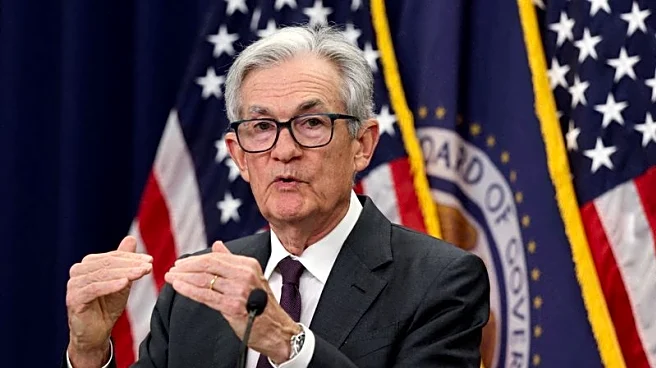What is the story about?
What's Happening?
The U.S. dollar has experienced a stabilization following a significant decline earlier this year, but many market analysts anticipate further depreciation. The dollar index fell approximately 11% over six months through June, marking one of its steepest declines. Speculators' net short dollar positions have decreased to $5.7 billion, the smallest since mid-April, down from $21 billion in late June, according to CFTC data. Concerns persist regarding U.S. fiscal and trade deficits, a sluggish job market potentially prompting aggressive Federal Reserve rate cuts, and global fund managers reconsidering their FX hedging practices to reduce exposure to the U.S. dollar.
Why It's Important?
The potential continued decline of the U.S. dollar could have significant implications for various economic stakeholders. A weaker dollar may affect international trade dynamics, making U.S. exports more competitive but increasing the cost of imports. It could also impact foreign investment in U.S. assets, as global investors reassess their exposure to American markets. Additionally, aggressive rate cuts by the Federal Reserve could erode the yield advantage of the dollar, influencing currency exchange rates and international financial strategies.
What's Next?
The Federal Reserve is expected to resume cutting short-term rates, which could further influence the dollar's value. Market participants are closely monitoring the U.S. economic outlook, particularly labor market conditions, to gauge future monetary policy actions. Global investors may continue to adjust their hedging strategies, potentially increasing pressure on the dollar. The Trump administration's 'America First' agenda may also play a role in shaping currency policy, although it has expressed a commitment to maintaining a strong dollar.
Beyond the Headlines
The ongoing decline of the U.S. dollar raises questions about the long-term sustainability of U.S. economic policies and their impact on global financial markets. The interplay between domestic economic performance and international trade relations could lead to shifts in geopolitical alliances and economic strategies. Additionally, the dollar's performance may influence discussions on U.S. manufacturing and trade policies, as a weaker dollar could support efforts to revive domestic production.
AI Generated Content
Do you find this article useful?
















